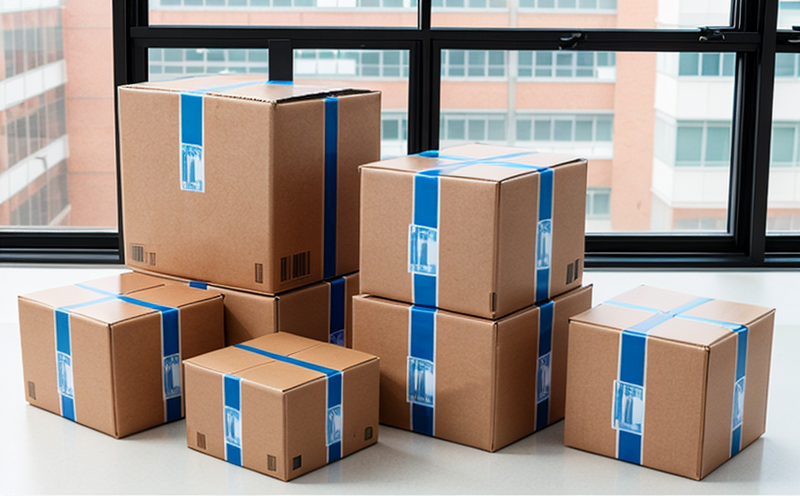ASTM F88 Seal Strength of Packaging Films with Nano Additives
The ASTM F88 test method is a critical standard for evaluating the seal strength of packaging films. This test measures the force required to open a sealed package, which is essential for ensuring product integrity and safety during transport and storage. When nano additives are introduced into packaging materials, their unique properties can significantly impact the seal strength. These nanomaterials often enhance barrier properties, reduce permeability, improve mechanical strength, or provide antimicrobial effects, all of which influence the seal performance.
Testing seal strength with nano-enabled films using ASTM F88 is particularly important in sectors where product integrity and safety are paramount. For instance, in the pharmaceutical industry, ensuring that a packaging film can withstand various environmental stresses without compromising its seal integrity is crucial. Similarly, in the food and beverage sector, maintaining an impermeable barrier to protect products from external contaminants like moisture or pathogens is vital.
The ASTM F88 test involves clamping one end of the specimen between two jaws and pulling it apart at a constant rate until the seal fails. This method allows for precise measurement of the peel force required to break the bond, providing valuable data on the effectiveness of the nano additives in enhancing the seal strength.
Preparation of specimens is critical when performing this test with nano-enabled films. The nanomaterials must be uniformly distributed throughout the film matrix, which can sometimes present challenges due to their small particle size and tendency to agglomerate. Ensuring uniform distribution requires careful mixing techniques and often involves the use of dispersants or surfactants.
The instrumentation used in this test is specifically designed for precision measurement. High-resolution tensile testers equipped with appropriate fixtures are essential for accurately measuring peel forces. These machines must be calibrated regularly to ensure consistent and reliable results. The choice of fixture is also crucial, as it should match the geometry of the packaging film being tested.
Reporting the results of this test involves providing detailed information about the test conditions, specimen preparation, instrumentation used, and the resulting peel force values. This data can then be used to assess the effectiveness of nano additives in enhancing seal strength and compare results across different formulations or production batches.
| Applied Standards | Description |
|---|---|
| ASTM F88-19 Standard Test Method for Peel Strength of Uniaxially Oriented Polyolefin Films | This standard specifies the procedure for measuring peel strength in one direction using a constant rate of separation. It is widely used in packaging industry to evaluate seal strength. |
| ASTM F1920-18 Standard Test Method for Peel Strength of Multilayer Polymeric Packaging Materials | This standard provides additional guidance on testing peel strength for multilayer structures, which often contain nano additives. |
The application of nano additives in packaging films is a rapidly evolving field. As more advanced nanomaterials become available, the need to accurately test their impact on seal strength will only increase. By adhering to standards like ASTM F88 and using appropriate testing methodologies, laboratories can provide reliable data that helps ensure product integrity and safety.
Why It Matters
The seal strength of packaging films is a critical factor in ensuring the integrity and safety of packaged products. A weak seal can lead to leaks, allowing contaminants or moisture to enter the package, which could compromise product quality and safety. In industries such as pharmaceuticals and food production, this risk is particularly significant.
Nano additives have the potential to significantly enhance seal strength by improving mechanical properties and providing additional functional benefits like barrier enhancement. By incorporating these nanomaterials into packaging films, manufacturers can achieve superior performance without compromising on cost or environmental impact.
Testing the seal strength of nano-enabled packaging films using ASTM F88 ensures that these materials meet industry standards and regulatory requirements. This testing not only provides assurance about product quality but also supports innovation in materials science by validating new formulations and manufacturing processes.
- Avoids potential contamination from leaks
- Ensures consistent performance across production batches
- Promotes safer storage and transportation of products
- Supports regulatory compliance for packaging materials
In summary, testing seal strength with nano-enabled films using ASTM F88 is essential for ensuring product integrity, safety, and compliance. By adhering to this standard, manufacturers can trust that their packaging meets the highest quality standards.
Applied Standards
| Applied Standards | Description |
|---|---|
| ASTM F88-19 Standard Test Method for Peel Strength of Uniaxially Oriented Polyolefin Films | This standard specifies the procedure for measuring peel strength in one direction using a constant rate of separation. It is widely used in packaging industry to evaluate seal strength. |
| ASTM F1920-18 Standard Test Method for Peel Strength of Multilayer Polymeric Packaging Materials | This standard provides additional guidance on testing peel strength for multilayer structures, which often contain nano additives. |
These standards ensure that the testing process is standardized and reproducible, leading to accurate and reliable results. By following these guidelines, laboratories can provide consistent quality assurance across different batches of packaging films containing nano additives.
Benefits
- Enhanced Seal Strength: Nano additives improve the mechanical properties of packaging films, leading to stronger seals and better protection against leaks.
- Better Barrier Properties: Nanomaterials often enhance barrier performance, protecting contents from moisture, oxygen, and other contaminants.
- Improved Durability: The addition of nano additives can increase the durability of packaging films, making them more resistant to environmental factors like temperature fluctuations and humidity.
- Easier Recycling: Some nano-enabled materials are designed with recyclability in mind, allowing for easier disposal without compromising product integrity.
- Faster Manufacturing Processes: Enhanced seal strength can lead to faster manufacturing processes by reducing the need for multiple layers or additional adhesives.
- Cost Efficiency: By improving performance and extending shelf life, nano additives can help reduce overall costs associated with packaging.
In conclusion, testing seal strength with nano-enabled films using ASTM F88 provides numerous benefits that enhance product integrity, safety, and efficiency in the manufacturing process.





